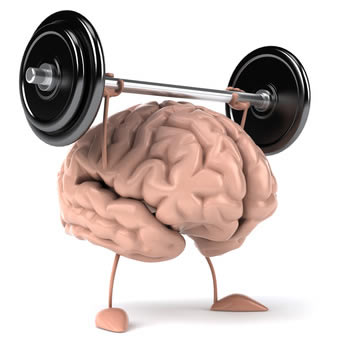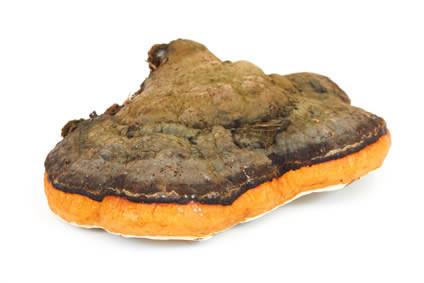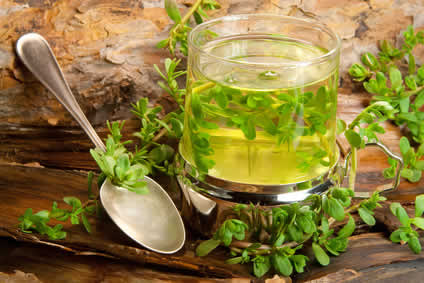Glutathione is a natural protein within the body made of three distinct amino acids, known as cysteine, glycine and glutamic acid. Body synthesizes glutathione to help defend it against free radicals, which are unstable molecules that can cause cell damage. Although all cells in the human body can synthesize glutathione, the liver is the primary organ that maintains circulating levels of glutathione. Research shows that glutathione levels, steadily decline by 8% to 12% per decade, beginning at the age of 20.
Glutathione exists in the body in two different forms. One is the reduced form, or GSH, and the other is the oxidized form, GSSG. GSH is the form that combats free radicals in the body. The majority of this substance found in the cells and tissue of the body is in the GHS state. Of total glutathione concentration in the body, only 10% resides as GSSG.
Glutathione and Diseases
Many diseases are related to the deficiency of glutathione. Inflammation, cancer, AIDS, sickle cell anemia, heart attack, stroke, liver disease, diabetes, Alzheimer’s disease, Parkinson’s disease correlate to glutathione deficiency. Scientific researchs has shown that people who have low levels of glutathione are susceptible to chronic disease. Low levels of glutathione limit the optimum functioning of T cells. Cytotoxic T cell responses and interleukin-II-dependent functions are inhibited even by a partial depletion of the intracellular glutathione pool. Many neurological and psychiatric disease processes are characterized by high levels of oxidative stress and free radical formation, as well as abnormalities in glutathione metabolism and antioxidant defenses. Two examples of immune system disorders that seem to have a correlation with low glutathione levels are rheumatoid arthritis and lupus. Atherosclerosis seems to be linked to oxidative damage to the endothelial cells especially when glutathione levels are low. Chronically low glutathione levels are seen in premature infants, alcoholic cirrhosis and individuals with HIV. A 27 percent reduction in glutathione has been reported in the cerebrospinal fluid of schizophrenic patients.
Glutathione Benefits
It is a strong antioxidant and thus neutralizes free radicals and prevents their formation. It is an antioxidant requisite for the protection of proteins; is involved in nucleic acid synthesis and plays a role in DNA repair. Plays a significant role in red and white blood cell formation. Builds as a cofactor the enzyme glutathione peroxidase. Important role in immune function via white blood cell production and is one of the most powerful antiviral agents known.
Antioxidant
 Glutathione is a molecule that helps remove free radicals from your body. Is a important factor in detoxification and antioxidant mechanisms of your body. It directly quenches reactive hydroxyl free radicals, other oxygen-centered free radicals, and radical centers on DNA and other biomolecules. Glutathione works with two enzymes to perform its functions; glutathione peroxidase converts ROS into water molecules, and glutathione-S-transferase binds glutathione to toxic substances so the latter can be excreted from your body.
Glutathione is a molecule that helps remove free radicals from your body. Is a important factor in detoxification and antioxidant mechanisms of your body. It directly quenches reactive hydroxyl free radicals, other oxygen-centered free radicals, and radical centers on DNA and other biomolecules. Glutathione works with two enzymes to perform its functions; glutathione peroxidase converts ROS into water molecules, and glutathione-S-transferase binds glutathione to toxic substances so the latter can be excreted from your body.
Immune System
Glutathione is an integral part of maintaining a strong immune system. It is responsible for transporting nutrients to lymphocytes and phagocytes, two cells that are important to immune function. The immune system works best if the lymphoid cells have a delicately balanced intermediate level of glutathione. In individuals with immune deficiency, glutathione levels fall well below the normal levels in blood and immune cells. Glutathione is responsible for an array of critical cellular processes including gene expression, cell signaling and DNA and protein synthesis. A article reported in the “Annals of Pharmacology” stated that glutathione is significant in DNA synthesis and repair, protein and prostaglandin synthesis, amino acid transport, detoxification of toxins and carcinogens, enhancement of the immune system, and protection from oxidation and enzyme activations.
Glutathione Foods
Glutathione occurs naturally in many foods, and people who eat well probably have enough in their diets. Those with diets high in fresh fruits and vegetables and freshly prepared meats are most likely just fine.
•Fruits
Some fruits are high in glutathione. Avocados, oranges,grapefruit, strawberries, watermelon, peaches, blueberries have the highest contents.
•Protein
Most sources of protein can increase your glutathione levels. Cysteine is found in high protein foods, especially ricotta and cottage cheese, pork, beef, chicken, turkey, duck and other poultry. Raw eggs and raw, unpasteurized milk are rich in glutathione.
•Sulfur Rich Nutrients
Eating sulfur-rich nutrients may enhance glutathione production in your body. The amino acids cysteine, glycine and glutamate are precursors to Glutathione (GSH) in the body’s cells. Consuming foods rich in these sulfur-containing amino acids can help boost glutathione levels including, garlic, onions, broccoli, asparagus, collards, cauliflower, kale and cabbage. Cooking vegetables reduces their glutathione levels. Glutathione peroxidase (GPx) is related to glutathione (GSH), and comes from raw foods and stimulates the production within the body of the master antioxidant glutathione (GSH).
•Selenium
Selenium is necessary for formation of glutathione containing enzymes. Selenium-rich oats, cereals, beef, poultry, Brazil nuts, walnuts, legumes, tuna, cheese, eggs.
•Unadulterated Whey Protein
Whey protein is an important food for increasing your glutathione levels. The combination of added whey protein with vitamin B2 (riboflavin) provides the contribution for boosting glutathione levels.
•Milk Thistle
Milk thistle (silymarin), helps to prevent the depletion of glutathione in the liver. Milk thistle can help your liver regenerate cells and heal itself. The liver has the maximum concentration of glutathione because it’s the main organ of detoxification. It also stimulates the glutathione S-transferase pathway and increases the level of glutathione in cells. A 2010 study reported in the journal “Food and Chemical Toxicology” found that milk thistleincreased the body’s level of glutathione, providing a possible means of preventing liver damage. Average dosage for people with impaired liver disease is between 420 and 600 milligrams of silymarin daily.
•Curcumin
Curcumin is an extract from the Indian spice turmeric. The two words are sometimes used interchangeably. Curcumin is able to stabilize the amounts of glutathione in the body. Curcumin has been found to increase expression of the glutathione S-transferase and protect neurons exposed to oxidant stress. Typical dosage consists of 400 to 600 mg of curcumin three times a day.
•Alpha Lipoic Acid
Supplements of alpha lipoic acid help improve intracellular levels of glutathione. Alpha-lipoic acid is a naturally occurring compound that is synthesized in small amounts by humans. Is present in every cell, where it assists in energy production. Alpha-lipoic acid (ALA) has many functions, but it’s one of the most effective free radical scavengers. It also has the ability to regenerate other antioxidants such as vitamins C, E, and glutathione. Around 30 to 40% of oral doses of ALA are absorbed. As a general antioxidant, a dosage of 20 to 50 mg daily is commonly recommended. Most studies have used doses of 300 to 600 milligrams daily.
•N-Acetylcysteine
N-Acetylcysteine is a metabolite of the sulfur-containing amino acid, cysteine. N-Acetylcysteine (NAC) is rapidly metabolized to intracellular glutathione. Clinical studies have shown that pretreatment with N-Acetylcysteine for paracetamol overdose protects liver cells and maintains glutathione levels. N-Acetylcysteine is a precursor to glutathione and used as both an antidote for acetaminophen-induced hepatotoxicity and as a mucolytic agent for respiratory diseases. Typical dosages range of 250-1500 mg a day.
•SAMe (S-adenosyl-L-methionine)
S-Adenosyl-L-methionine is a naturally occurring molecule distributed to virtually all body tissues and fluids. SAMe (S-Adenosylmethionine) is an important energy source and intrinsically related to the synthesis of glutathione. Folic acid, vitamin B6, and B12, are required for proper formation and metabolism of S-Adenosylmethionine. In transsulfuration reactions, S-adenosyl-L-methionine is converted to cysteine in a series of enzymatic steps. Cysteine is a precursor of glutathione, a important cellular antioxidant. SAMe must be taken on an empty stomach for absorption purposes. ( SAM-e Dosage for Depression )
 In a 1991 study of phosphatidyl serine among people aged 50 to 75, researchers found positive effects when they used 100 mg doses of PS, three times daily. Researchers found a 30 % improvement in cognitive function that included memory, learning, recalling names, faces, and numbers. In one double-blind study that enrolled 149 people with memory loss but not dementia, PS provided important effects as compared with placebo. People with the most severe memory loss showed the most development. In a large, multicenter study of geriatric patients, from 23 geriatric or general medicine units with moderate to severe age-related cognitive decline, those who received phosphatidyl serine therapy showed significantly improved behavior, such as increased motivation, initiative and socialization, compared to the placebo group. In another 6 month study of 40 individuals, PS supplementation enhanced cerebral metabolism and outcomes of cognitive training.
In a 1991 study of phosphatidyl serine among people aged 50 to 75, researchers found positive effects when they used 100 mg doses of PS, three times daily. Researchers found a 30 % improvement in cognitive function that included memory, learning, recalling names, faces, and numbers. In one double-blind study that enrolled 149 people with memory loss but not dementia, PS provided important effects as compared with placebo. People with the most severe memory loss showed the most development. In a large, multicenter study of geriatric patients, from 23 geriatric or general medicine units with moderate to severe age-related cognitive decline, those who received phosphatidyl serine therapy showed significantly improved behavior, such as increased motivation, initiative and socialization, compared to the placebo group. In another 6 month study of 40 individuals, PS supplementation enhanced cerebral metabolism and outcomes of cognitive training. A water-soluble extract of chaga has been shown to have an antioxidant feature in cell culture trials. Experts believe that oxidative nuclear DNA damage over the human life span strongly contributes to age related degeneration and the development of cancers. Scientists at Kyunghee University South Korea examined chaga mushroom effectiveness in protecting cellular DNA. Cells were treated with chaga extract then exposed to oxidative stress. The extract-treated cells had 40 % less DNA mutation compared with the untreated cells.
A water-soluble extract of chaga has been shown to have an antioxidant feature in cell culture trials. Experts believe that oxidative nuclear DNA damage over the human life span strongly contributes to age related degeneration and the development of cancers. Scientists at Kyunghee University South Korea examined chaga mushroom effectiveness in protecting cellular DNA. Cells were treated with chaga extract then exposed to oxidative stress. The extract-treated cells had 40 % less DNA mutation compared with the untreated cells. Studies in humans have found that bacopa monnieri may help to reduce stress and anxiety. In a double-blind placebo controlled study at Helfgott Research Institute, 48 participants, 65 or older, were given a daily dose of 300 mg of bacopa or a placebo for 12 weeks. Those who took the bacopa showed improved word recall memory scores in comparison to the placebo group. The Bacopa group also showed less anxiety and depression after taking the supplement when compared to the placebo group. This study provides further evidence that bacopa monnieri has property for safely enhancing cognitive performance in the elderly. Bacopa boosts the effects of certain neurotransmitters, including
Studies in humans have found that bacopa monnieri may help to reduce stress and anxiety. In a double-blind placebo controlled study at Helfgott Research Institute, 48 participants, 65 or older, were given a daily dose of 300 mg of bacopa or a placebo for 12 weeks. Those who took the bacopa showed improved word recall memory scores in comparison to the placebo group. The Bacopa group also showed less anxiety and depression after taking the supplement when compared to the placebo group. This study provides further evidence that bacopa monnieri has property for safely enhancing cognitive performance in the elderly. Bacopa boosts the effects of certain neurotransmitters, including